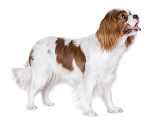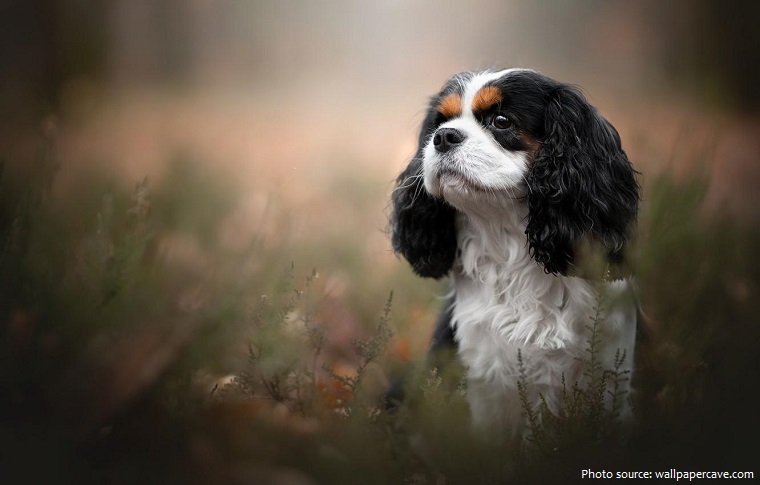
The Cavalier King Charles Spaniel is a small breed of dog of the spaniel type.
This breed is known for generally being incredibly affectionate, sociable, happy-go-lucky, and eager to please. They usually thrive in the company of humans and other dogs and, for this reason, they would suit a household where they will not regularly be left alone.
The Cavalier King Charles spaniel has become one of the most popular breeds in the world due to its ability to fit into almost any living situation.
The Cavalier’s all-around beauty, regal grace, and even temper mark him as one of dogdom’s noblemen.
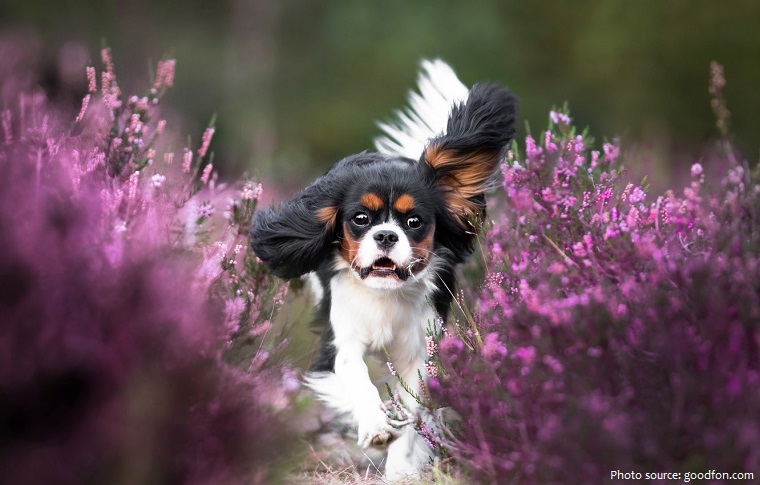
It is one of the largest of the toy breeds.
The Cavalier King Charles Spaniel typically stand from 30 to 33 cm (12 to 13 inches) at the shoulder and weigh 6 to 9 kg (13 to 20 pounds) as an adult dog.
The breed has four recognized colours:
• Cavaliers that have rich chestnut markings on a pearly white background are known as Blenheim in honor of Blenheim Palace, where John Churchill, 1st Duke of Marlborough raised for assistance in hunting the predecessors to the Cavalier breed in this particular colour.
• Black and Tan are dogs with black bodies with tan highlights, particularly eyebrows, cheeks, legs and beneath the tail. Black and Tan is referred to as “King Charles” in the King Charles Spaniel.
• Ruby Cavaliers should be entirely chestnut all over, although some can have some white in their coats that is considered a fault under American Kennel Club conformation show rules.
• The fourth colour is known as Tricolour, which is black and white with tan markings on cheeks, inside ears, on eyebrows, inside legs, and on underside of tail. This colour is referred to as “Prince Charles” in the King Charles
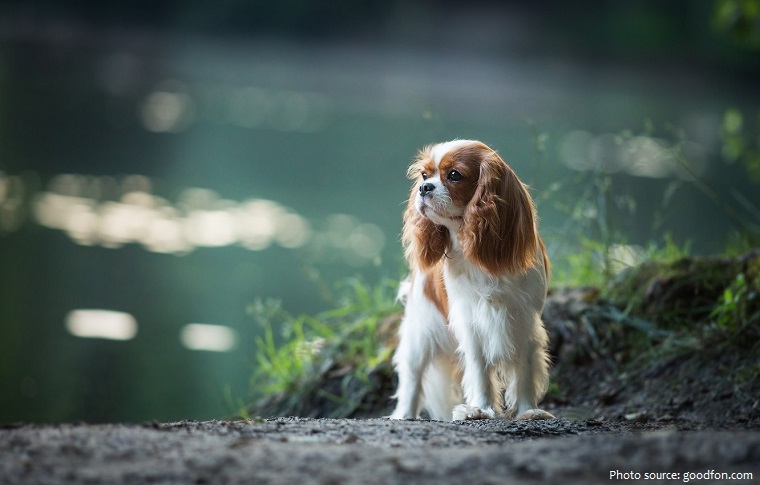
This companionable breed has long been associated with nobles and royals in Europe, particularly England, from as far back as the 17th century.
Queen Elizabeth I had a ‘spaniel gentle’ as a comforter. The spaniel of Mary, Queen of Scots was found hidden in her petticoats after she was beheaded. However, it was in the courts of Charles I and his son Charles II that the toy spaniels became well established and their popularity spread, particularly amongst the nobility.
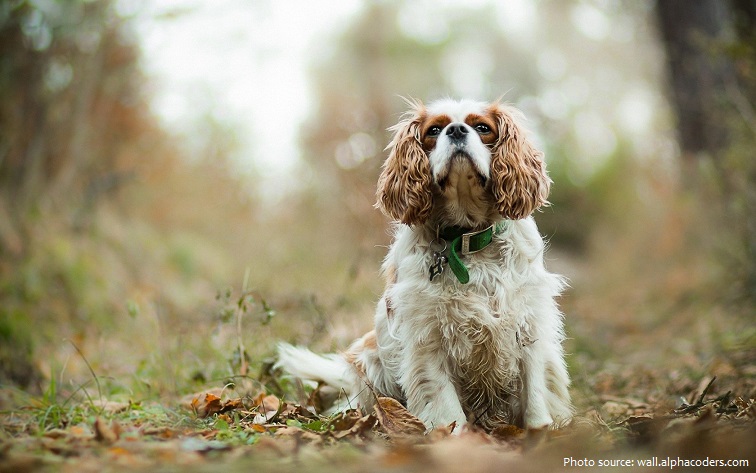
The dogs get their name from King Charles II, who was very fond of the breed. It was said that the king would not go anywhere without at least three spaniels at his heels.
An urban legend claims that Charles II issued a special decree granting King Charles Spaniels permission to enter any establishment in the UK, overriding “no dog except guide dogs” rules. A variant of this myth relates specifically to the Houses of Parliament. This myth is sometimes instead applied to the Cavalier King Charles Spaniel.
During the early part of the 18th century, John Churchill, 1st Duke of Marlborough, kept red and white KingCharles type spaniels for hunting. The duke recorded that they were able to keep up with a trotting horse. His estate was named Blenheim in honor of his victory at the Battle of Blenheim. Because of this influence, the red and white variety of the King Charles Spaniel and thus the Cavalier King Charles Spaniel became known as the Blenheim.
Queen Victoria was also a lover of the breed and her Cavalier King Charles Spaniel, Dash, was described as her closest childhood companion.
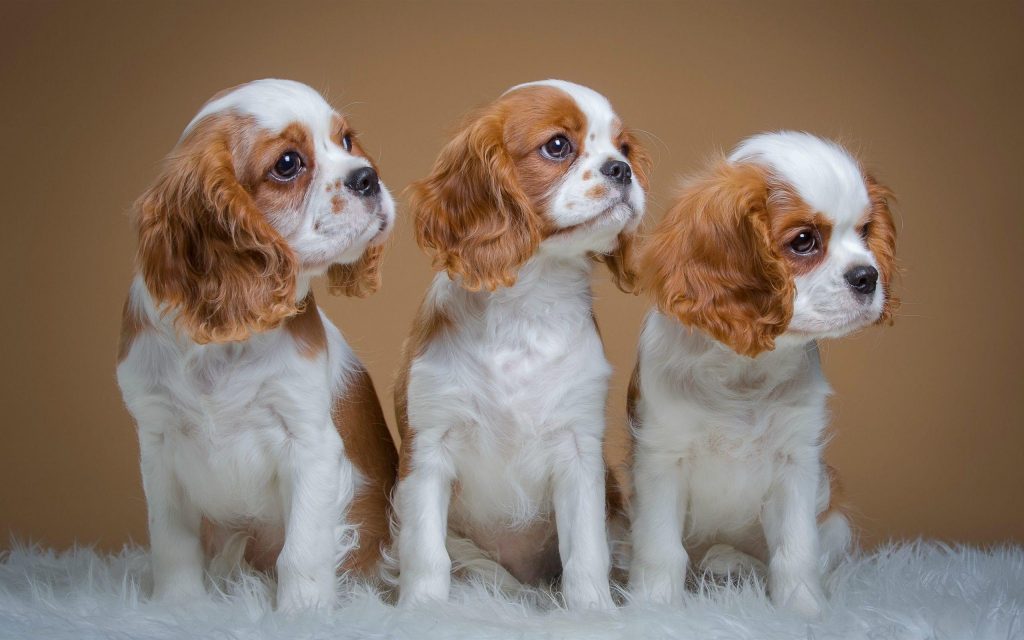
During Victoria’s era, these Spaniels began to be crossed more with flatter faced companion breeds from Asia, such as the Pug and the Japanese Chin. This lead to the development of the English Toy Spaniel (which is confusingly known as the King Charles Spaniel in the UK).
In the 1920s, breed enthusiasts began to work towards revitalizing the look of the spaniels from King Charles II and the Duck of Malboroughs time, and this led to the development of the breed we know today.
In 1926, the American Roswell Eldridge offered a dog show class prize of twenty-five pounds of sterling silver each as a prize for the best male and females of “Blenheim Spaniels of the old type, as shown in pictures of Charles II of England’s time, long face, no stop, flat skull, not inclined to be domed, with spot in center of skull.” The breeders of the era were appalled, although several entered what they considered to be sub-par Cavalier King Charles Spaniels in the competition. Eldridge died before seeing his plan come to fruition, but several breeders believed in what he said and in 1928 the first Cavalier club was formed. The first standard was created, based on a dog named “Ann’s Son” owned by Mostyn Walker, and the Kennel Club recognized the variety as “King Charles Spaniels, Cavalier type”.
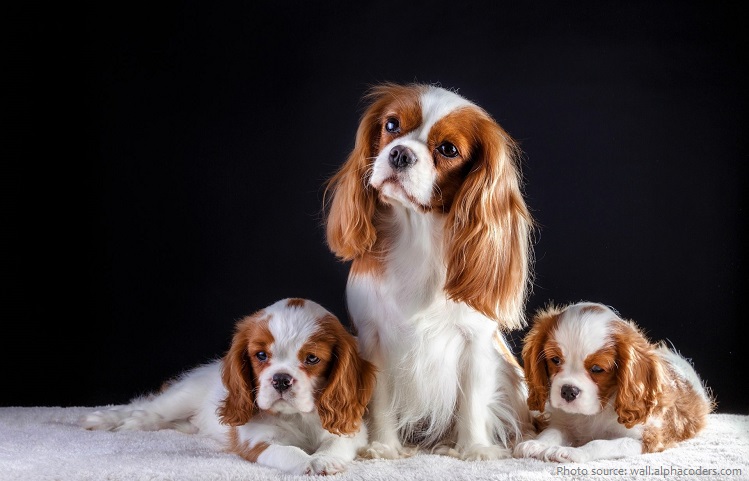
World War II caused a drastic setback to the emerging breed, with the vast majority of breeding stock destroyed because of wartime hardship and food shortages. For instance, in the Ttiweh Cavalier Kennel, the population of 60 dogs dropped to three during the 1940s. Following the war, few dogs survived as the new beginning from which all present-day Cavaliers descend. And in 1945, the Kennel Club first recognized the breed in its own right as the Cavalier King Charles Spaniel.
The Cavalier King Charles Spaniel is AKC’s 140th breed.
The Cavalier was featured on the hit HBO series, “Sex and the City”, as Charlotte York’s dog.
The Cavalier King Charles Spaniel and the English Toy Spaniel can often be confused with each other. In the United Kingdom, the English Toy Spaniel is called the King Charles Spaniel, while in the United States, one of the colours of the Toy Spaniel is known as King Charles.
A Cavalier King Charles Spaniel puppy is likely to cost between $800-$2,500 with the average price being $1,500.
